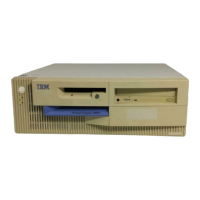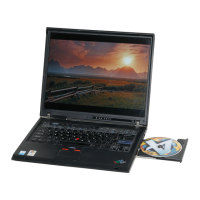Measuring Voltages:
Many MAP steps instruct you to measure voltages
on cable plugs and electronic board connectors. If you are asked to
measure voltage at several places on a plug or connector, a chart next to or
near the instruction indicates the number of the plug or connector, the pin
numbers you should measure, the signal name, and the correct voltage for
the condition you are measuring. Measure the voltage only at the pins listed
in the chart. Remember to set your meter on the correct scale and to put
the meter leads in the correct position for the voltage you are asked to
measure.
Note: Use frame ground for the ground reference. Attach the black meter
(ground) lead to frame ground, except where specified otherwise.
“Diagnostic Aids”
This chapter contains information outside the MAPs to help you diagnose a
failure of a specific part. Some diagnostic aids are resident in the machine,
such as the Power-On Self Test (POST). The machine performs the POST
each time it is turned on. Use this information throughout the diagnostic pro-
cedures. You should become familiar with the POST and be able to deter-
mine if the machine performed all the steps.
Power-On Self Test (POST):
The POST is initiated automatically each
time the system unit is powered on. The POST is a series of system checks
and initializations that verify the correct operation of the base system. Two
classifications of malfunctions may be detected during the POST: critical and
noncritical.
Critical malfunctions
prevent the system from operating at all, or could cause
incorrect results that are apparent to the user. Examples of critical errors
include processor or interrupt controller malfunctions. If a critical error is
detected during the POST, an attempt is made to indicate the error, and all
testing halts.
Noncritical malfunctions
cause incorrect results that may not be apparent to
the user. An example of a noncritical error is a memory module failure. If a
noncritical error occurs, an error code is displayed, and the testing is
stopped. Testing can be continued on a noncritical error by pressing the
Esc key.
General Information 1-3

